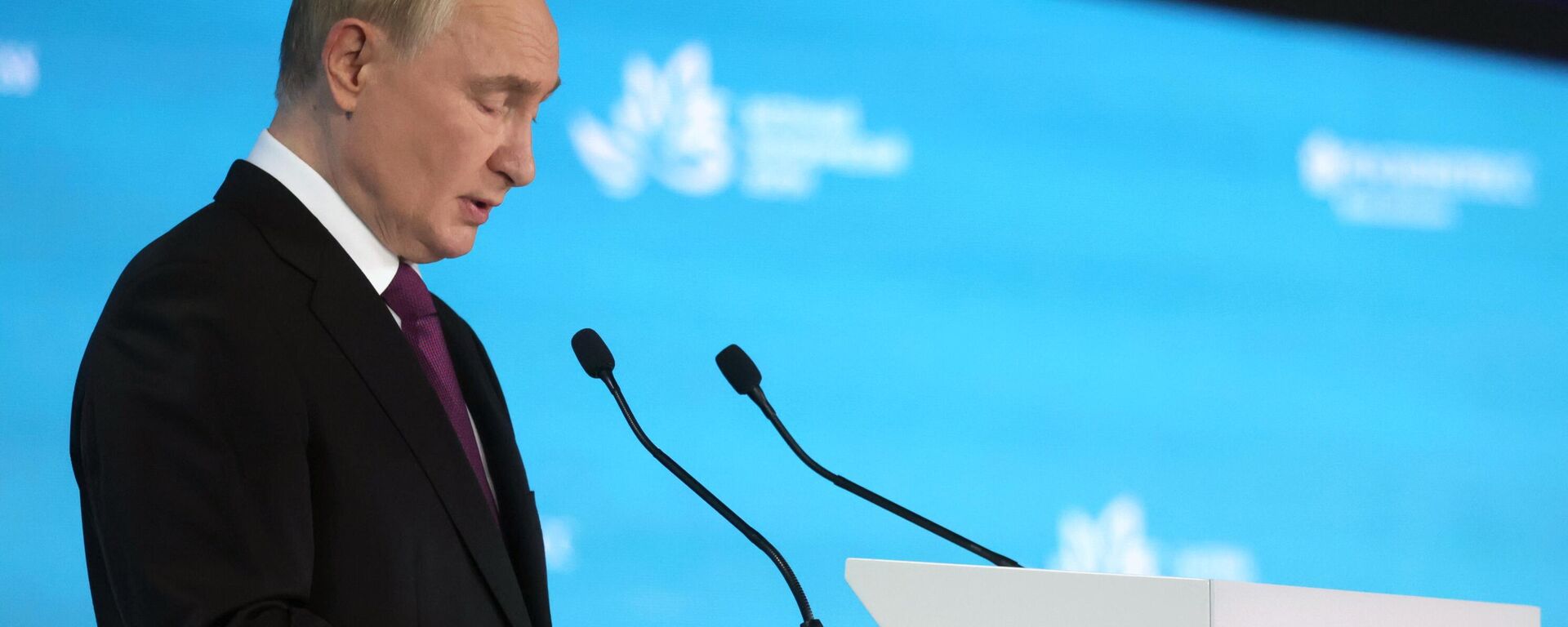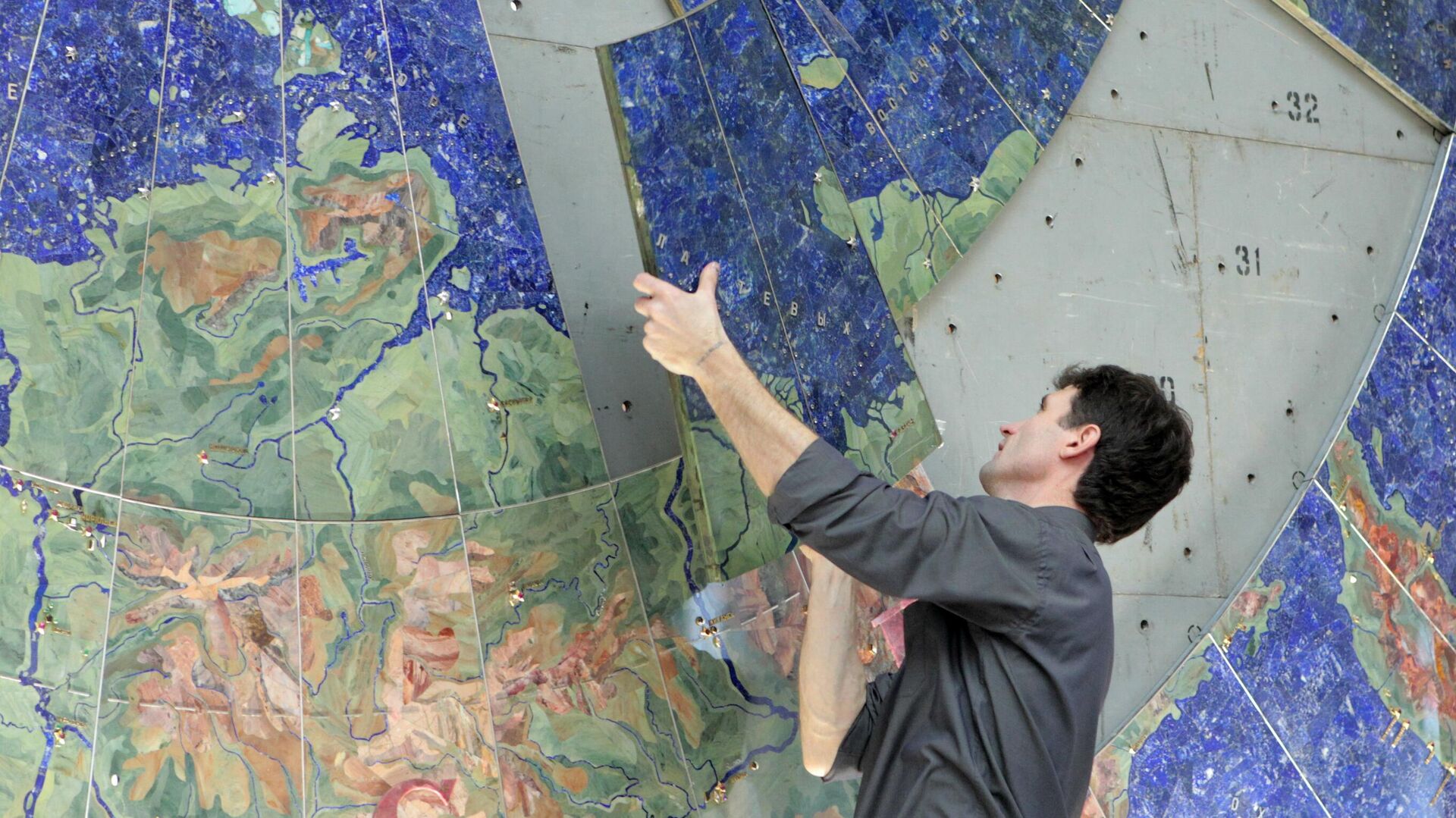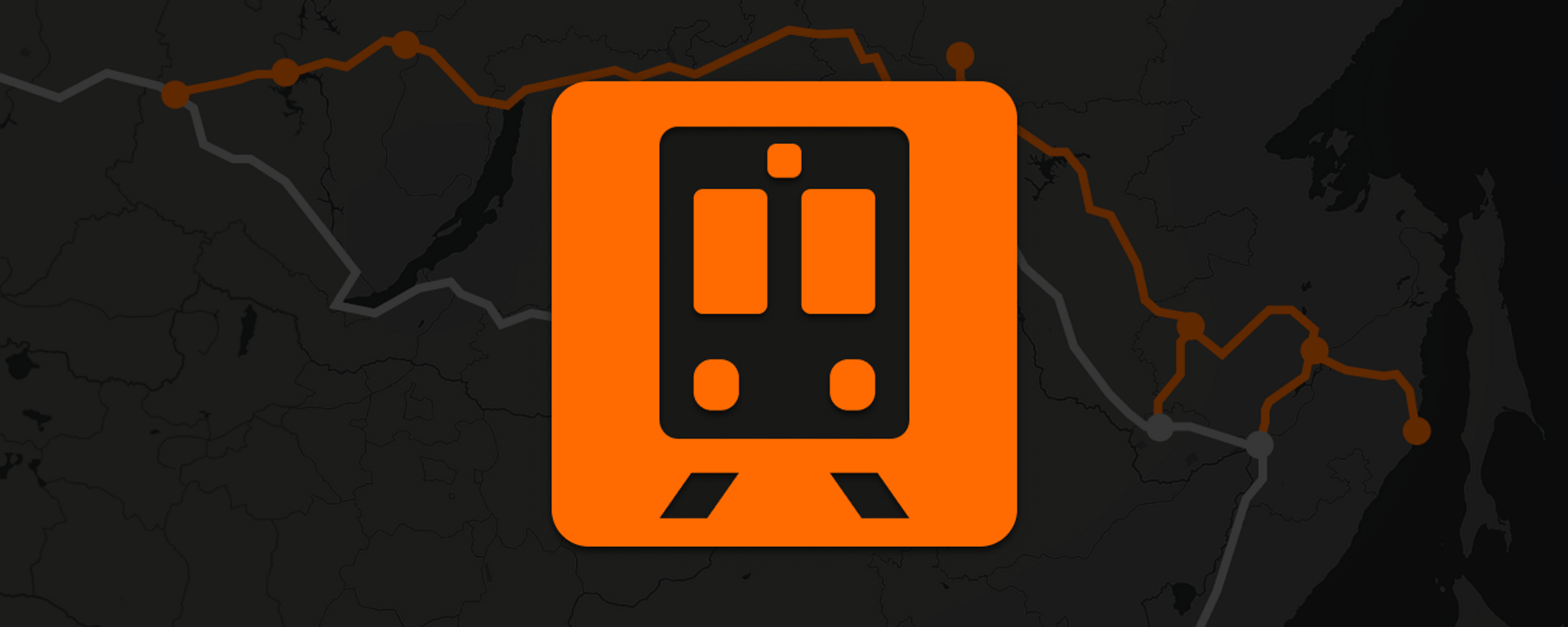https://sputnikglobe.com/20240906/jewel-of-russias-economic-crown-how-the-far-east-can-become-21st-centurys-engine-of-growth-1120056944.html
Jewel of Russia’s Economic Crown: How the Far East Can Become 21st Century's Engine of Growth
Jewel of Russia’s Economic Crown: How the Far East Can Become 21st Century's Engine of Growth
Sputnik International
“The Far East has become a crucial factor for strengthening Russia’s standing in the world, and our flag-bearer in the new global economic reality. The further development of the Far East will largely determine the future of our country as a whole,” President Putin said at the Eastern Economic Forum on Thursday.
2024-09-06T13:47+0000
2024-09-06T13:47+0000
2024-09-07T07:57+0000
economy
vladimir putin
russia
far east
china
eef
trans-siberian railway
eastern economic forum - 2024
https://cdn1.img.sputnikglobe.com/img/07e8/09/06/1120057066_0:258:2724:1790_1920x0_80_0_0_ea6910a4757b988d8f7ff32fc832dd31.jpg
Here’s why that’s the case:Natural ResourcesRepresenting nearly 41% of Russia’s total land mass (some 6.95 million square km, or nearly the size of Australia), the Russian Far East is home to an array of untapped resource riches. The territory accounts for 100% of Russia’s antimony production, 98% of its diamonds, 90% of borax production, 50% of gold, over 40% of tin, 14% of tungsten, about a third of Russia’s coal and hydroengineering reserves and resources, and 40% of Russia’s fish and seafood output. The region is rich in an array of ores, metals and rare earths materials, lime and building stones, and other resources, and represents some 30% of Russia’s total forested area – representing part of the world’s two forest ‘lungs’ (one in Siberia and the other in Brazil’s rainforest).Despite its vast economic potential, the Far East could use more people, with Khabarovsk and Vladivostok – the territory’s largest cities, having about 613,000 and 600,000 residents, respectively, and the territory as a whole having a population of just 8 million. With this in mind, along with incentives for business, the government has come up with the so-called ‘Far Eastern Hectare’ program, offering residents a free hectare of land to develop as they see fit. The program is open to Russian citizens, and foreign nationals living in Russia for five years or more.LogisticsThe Far East is also a crucial strategic transport hub, home to the easternmost part of the Trans-Siberian Railway, and much of the Baikal-Amur Mainline, which is now undergoing modernization and expansion. It’s also home to important port infrastructure, including the port of Vladivostok. Its infrastructure potentially represents part of China’s global, multi-trillion dollar Belt and Road Initiative, which seeks to link Europe and Asia via a modern-day Silk Road.IndustryAlong with its resources and processing industries, the Far East is home to an array of industrial enterprises, including mechanical engineering and shipbuilding and repair, automotive factories, defense enterprises, chemical, food and medical product factories, and the Komsomolsk-on-Amur Aircraft Plant. The Russian state has created 17 Priority Development Territory Zones in the Far East since 2015 designed to ease doing business for investors.Russia-China СooperationSpeaking at the EEF on Thursday, Chinese Vice Premier Han Zheng said trade between China and the Russian Far East reached the equivalent of $33.8 billion in 2023, up 54% in a single year. This represents about 14% of total Russia-China trade turnover of $240 billion that year, and is only logical, given that the two nations share a sprawling, 4,209 km border, all of it in the Far East.Gateway to the Asia PacificThe Far East has been characterized as Russia’s gateway to the explosive economic power of the Asia-Pacific region. In his speech Thursday, President Putin stressed that the region’s development will remain a national priority for the duration of the 21st century, and that Moscow’s decision to focus on the Far East has proven correct, given the “objective trends…that are gaining strength in the global economy, where the main business connections, trade routes, and in general the entire vector of development is being reoriented more and more toward the East and the Global South.”
https://sputnikglobe.com/20240424/infographics-legendary-baikal-amur-mainline-turns-50-marking-russias-presence-in-asia-pacific-1118086837.html
https://sputnikglobe.com/20230917/putin-face-to-face-soyuz-2--ballet-kim-jong-uns-big-agenda-russia-trip-1113432247.html
https://sputnikglobe.com/20240905/key-takeaways-from-president-putins-speech-at-eastern-economic-forum-1120038272.html
russia
far east
china
Sputnik International
feedback@sputniknews.com
+74956456601
MIA „Rossiya Segodnya“
2024
Sputnik International
feedback@sputniknews.com
+74956456601
MIA „Rossiya Segodnya“
News
en_EN
Sputnik International
feedback@sputniknews.com
+74956456601
MIA „Rossiya Segodnya“
Sputnik International
feedback@sputniknews.com
+74956456601
MIA „Rossiya Segodnya“
what resources does russian far east have, what percentage of russian economy is in far east
what resources does russian far east have, what percentage of russian economy is in far east
Jewel of Russia’s Economic Crown: How the Far East Can Become 21st Century's Engine of Growth
13:47 GMT 06.09.2024 (Updated: 07:57 GMT 07.09.2024) “The Far East has become a crucial factor for strengthening Russia’s standing in the world, and our flag-bearer in the new global economic reality. The further development of the Far East will largely determine the future of our country as a whole,” President Putin said at the Eastern Economic Forum on Thursday.
Here’s why that’s the case:
Representing nearly 41% of Russia’s total land mass (some 6.95 million square km, or nearly the size of Australia), the Russian Far East is home to an
array of untapped resource riches. The territory accounts for 100% of Russia’s antimony production, 98% of its diamonds, 90% of borax production, 50% of gold, over 40% of tin, 14% of tungsten, about a third of Russia’s coal and hydroengineering reserves and resources, and 40% of Russia’s fish and seafood output. The region is rich in an array of ores, metals and rare earths materials, lime and building stones, and other resources, and represents some 30% of Russia’s total forested area – representing part of the world’s two forest ‘lungs’ (one in Siberia and the other in Brazil’s rainforest).
Despite its vast economic potential, the Far East could use more people, with Khabarovsk and Vladivostok – the territory’s largest cities, having about 613,000 and 600,000 residents, respectively, and the territory as a whole having a population of just 8 million. With this in mind, along with incentives for business, the government has come up with the so-called ‘Far Eastern Hectare’ program, offering residents a free hectare of land to develop as they see fit. The program is open to Russian citizens, and foreign nationals living in Russia for five years or more.
The Far East is also a crucial strategic transport hub, home to the easternmost part of the Trans-Siberian Railway, and much of the Baikal-Amur Mainline, which is now undergoing modernization and expansion. It’s also home to important port infrastructure, including the port of Vladivostok. Its infrastructure potentially represents part of China’s global, multi-trillion dollar Belt and Road Initiative, which seeks to link Europe and Asia via a modern-day Silk Road.
Along with its resources and processing industries, the Far East is home to an array of industrial enterprises, including mechanical engineering and shipbuilding and repair, automotive factories, defense enterprises, chemical, food and medical product factories, and the Komsomolsk-on-Amur Aircraft Plant. The Russian state has created 17 Priority Development Territory Zones in the Far East since 2015 designed to ease doing business for investors.
Speaking at the EEF on Thursday, Chinese Vice Premier Han Zheng said trade between China and the Russian Far East reached the equivalent of $33.8 billion in 2023, up 54% in a single year. This represents about 14% of total Russia-China trade turnover of $240 billion that year, and is only logical, given that the two nations share a sprawling, 4,209 km border, all of it in the Far East.

17 September 2023, 13:06 GMT
Gateway to the Asia Pacific
The Far East has been characterized as Russia’s gateway to the explosive economic power of the Asia-Pacific region. In his speech Thursday, President Putin stressed that the region’s development will remain a national priority for the duration of the 21st century, and that Moscow’s decision to focus on the Far East has proven correct, given the “objective trends…that are gaining strength in the global economy, where the main business connections, trade routes, and in general the entire vector of development is being reoriented more and more toward the East and the Global South.”

5 September 2024, 13:43 GMT





